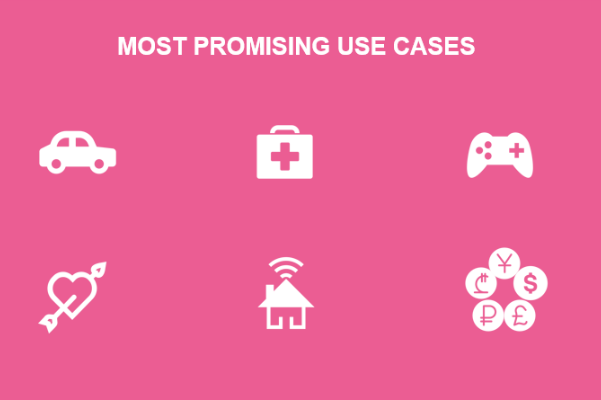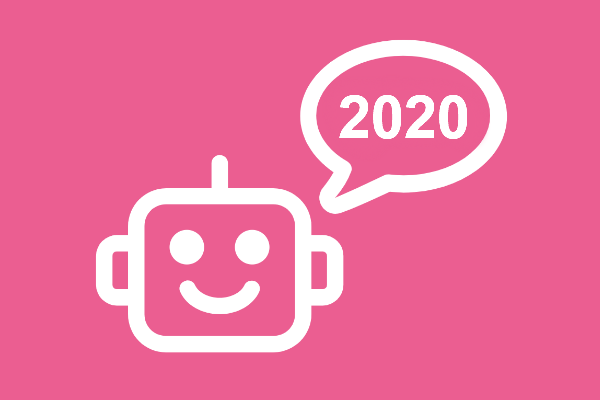Looking forward to 2020 and beyond
If there is one truth about technology that we can all agree on, it is that technology doesn’t stand still. It wasn’t so long ago that we were all saving on to floppy disks, or sitting waiting patiently listening to the derrdarrrbrrrrrrrr of the modem slowly, oh so slowly, connecting to the internet. Fast forward to today, we carry the internet with us in the smartphones in our pockets and expect to be able to access whatever we want, immediately, from wherever we are in the world. And when we can’t we feel cheated. Impotent. As though we have lost a limb.
So what’s next?
What does 2020 hold in store for our technologically driven and changing world?
One of the biggest technology drivers that has come into our lives in recent years has been conversational AI and chat bots.
Conversational AI and chat bots are a significantly growing area for businesses, especially those with heavy customer service departments. Conversational AI has enabled organisations to create personalised conversations at scale. And without increasing customer service costs.
From the customer point of view, chat bots bring the benefit of being able to make contact with an organisation at any time of the day and without having to go through the inordinate frustration of listening to tinny music while waiting in a hold queue and being told repeatedly how important our call is before finally being connected. Chat bot conversations are two-way, and chat bots can hand over to a human counterpart at any time for a more personal experience.
This way of contacting companies will increase during 2020 due to its efficiencies and cost savings for businesses and its speed and convenience for customers. It is that elusive win-win we are always searching for.

However – and there is always a however when technology doesn’t stand still – the use of chat bots via typing will diminish in favour of voice. Probably not significantly during 2020, but gradually, and certainly in the close future beyond.
In 2019, the global smart speaker market grew by 45 per cent, reaching 28.6 million units sold worldwide. The market is competitive and vendors will continue to compete to entice new customers, additional speakers, and upgrades with new functionality, displays, and features. We will also see an increase in smart speaker collaborations with brands and businesses. Amazon dominates the market with an almost 37 per cent market share, and this dominance is likely to continue through 2020.
In 2020, the market will continue to grow in terms of the smart speakers sold, but more importantly the technology that is behind the smart speakers will penetrate our lives in ever growing ways. When the first households plugged in their first smart speakers, really the novelty was just to ask Alexa to play this or that song or to ask her an inane question. But very quickly we started to get her to turn our lights on and off, pop on the heating, and other basic tasks within the house.
As conversational AI has improved we have begun to turn to our smart speakers in the first instance. In the kitchen and want to know what 350 degrees Fahrenheit is in Celsius? We are more likely to ask our smart speaker than to open up our smart phones to check. It’s so much quicker. And that, in a nutshell is what drives our usage. We want convenience and voice activation gives us this. It is estimated that by 2020, 50% of all internet searches will be voice based, and 30% of all searches will be done using a device without a screen.
Voice activated technology is infiltrating our lives in ever more ways and we become used to it. What starts as a technological novelty can very quickly become something we rely upon. And this is what we see with voice activated conversational AI. In the UK, around 70 per cent of adults with a home voice assistant-powered device, such as a smart speaker, use it every day. And this is a rise from 40 per cent in 2018. Two in 10 adults are using this technology five or more times a day. From 2018 to 2019 we saw a rise in the use of voice assistants for news reports, making purchases, ordering take away, writing shopping lists, dictating emails….

The novel is becoming the standard, and it is doing it swiftly.
Voice-gaming is another area we will see growth. What started as a possible way to be more inclusive to vision and/or physically impaired players, has been recognised as a way for all to access and enjoy games. No more learning the controls and functions within a game, we can just use our voice and start playing straight away.
Voice-gaming is complex for developers and, really, the technology is still at a fairly early-adopter stage but it will come. Games such as Chicken Scream, Scream Jump, and Screaming Bird (I am sensing a scream theme so far) have had some success and more will follow, and become more complex as developers become more adept.
For both voice and typing chat bots, what we will see in the coming year is the use of this technology in a growing range of areas. Currently chat bots are most frequently found in industries such as banking and telecoms. But why not the health industry, online dating searches…? There are many areas of our lives that we could utilise chat bots and 2020 will see the expansion of conversational AI throughout our lives driven by the cost saving benefits for business combined with the convenience to the consumer. Everyone benefits.
Key take away
Conversational AI will continue to develop and be used in wider areas of our everyday lives. Businesses will increasingly offer the use of chat bots as a way to communicate with them, and consumers will increasingly opt for this method due to the speed and convenience it offers.
Alongside the continued widespread adoption of typing-activated chat bots, businesses will also invest in voice activated technology and this, in due course, will become the go-to method of communication.

